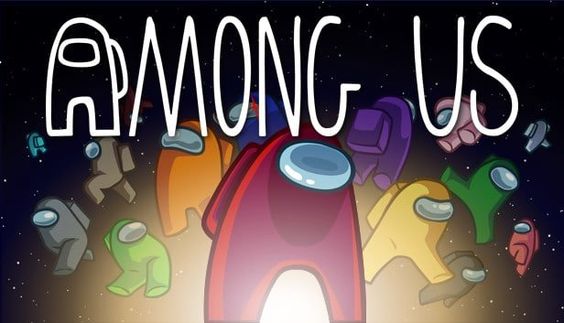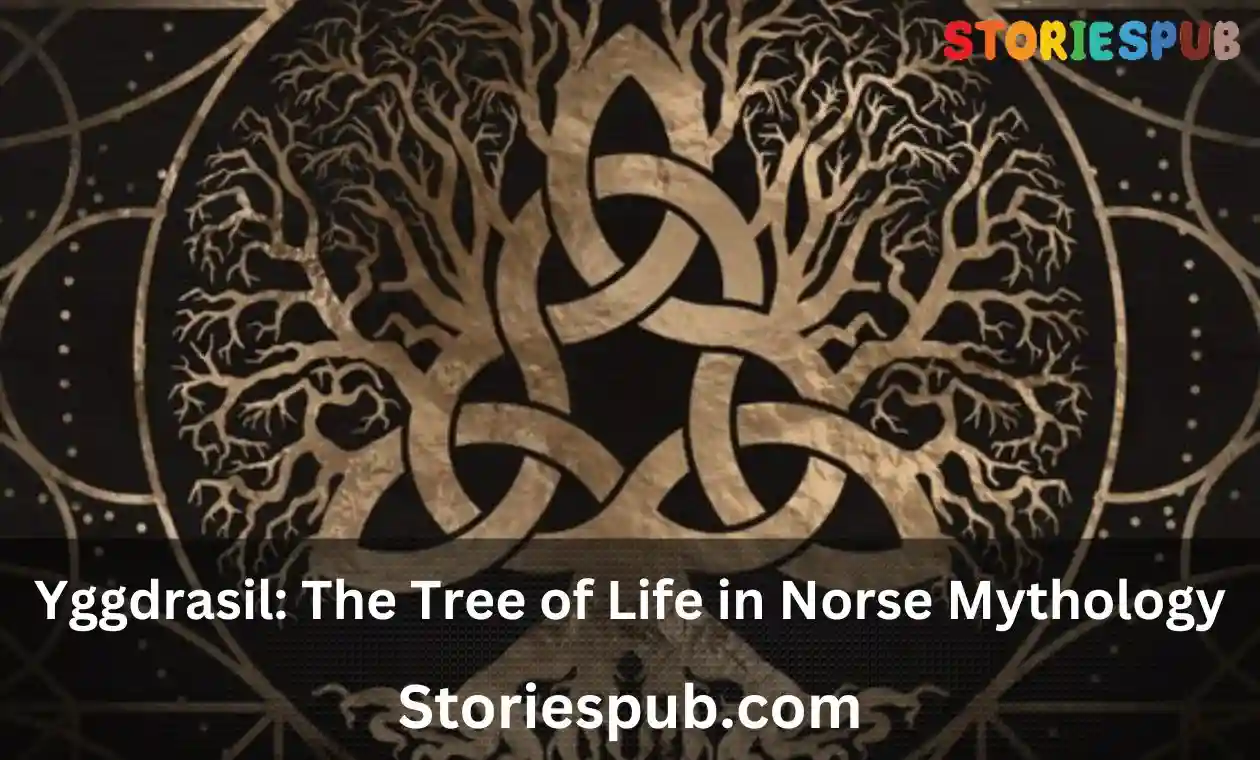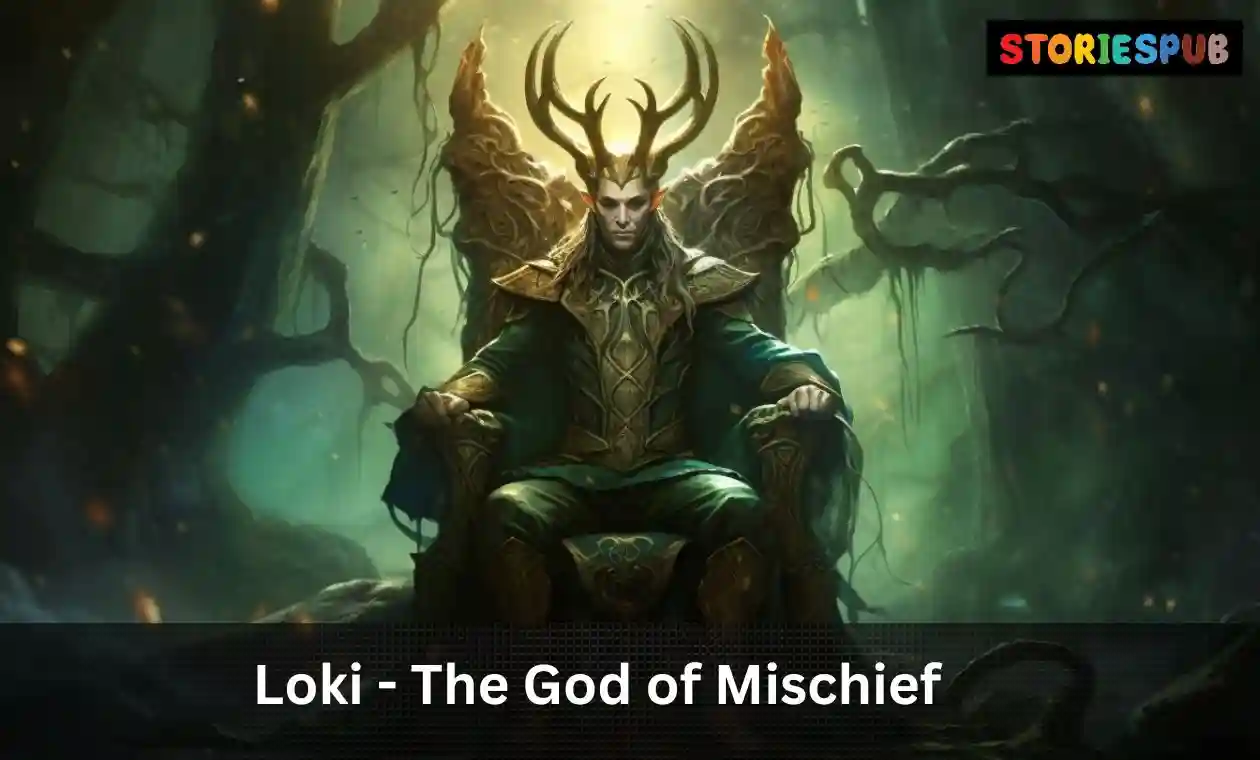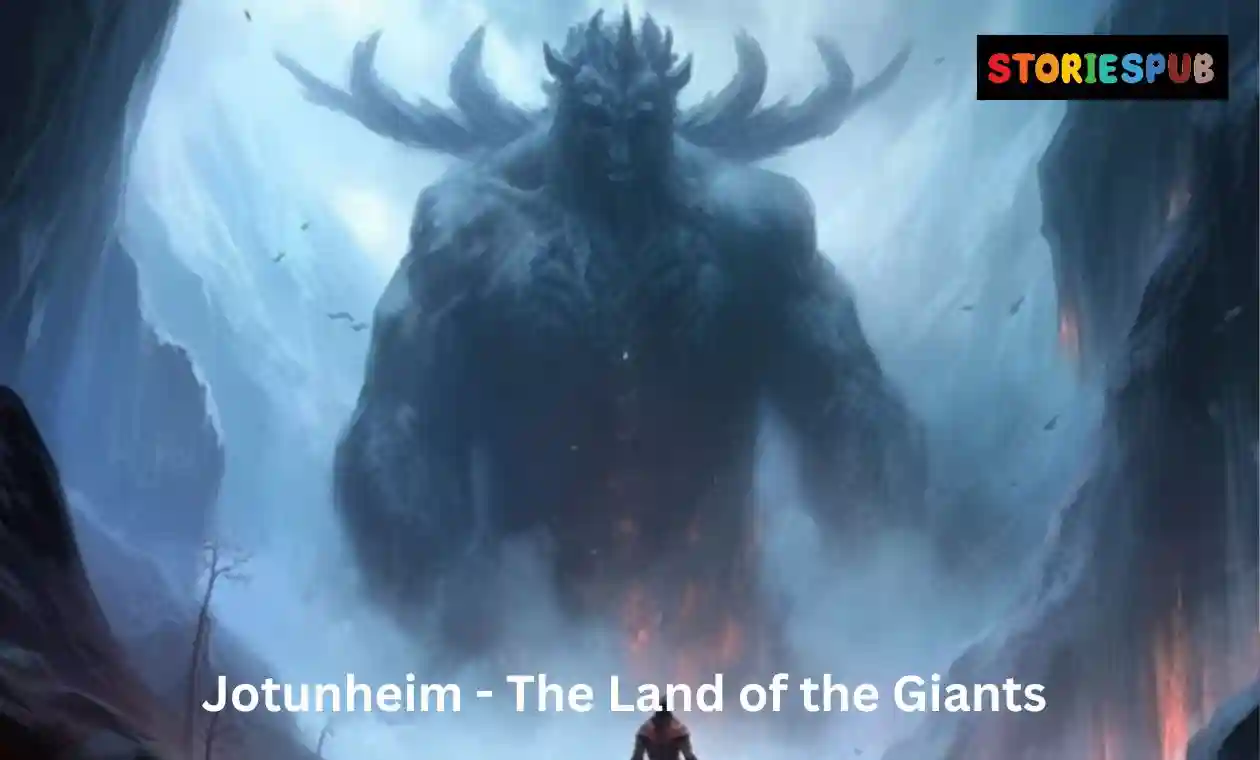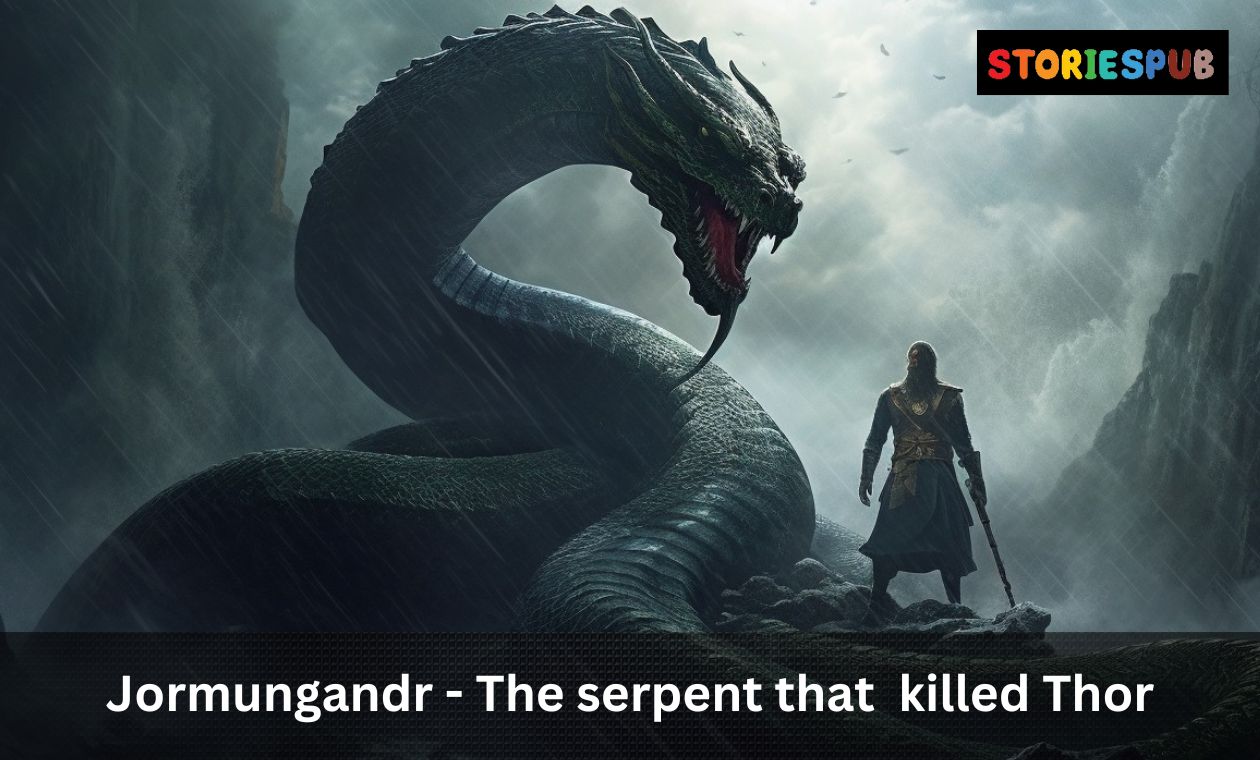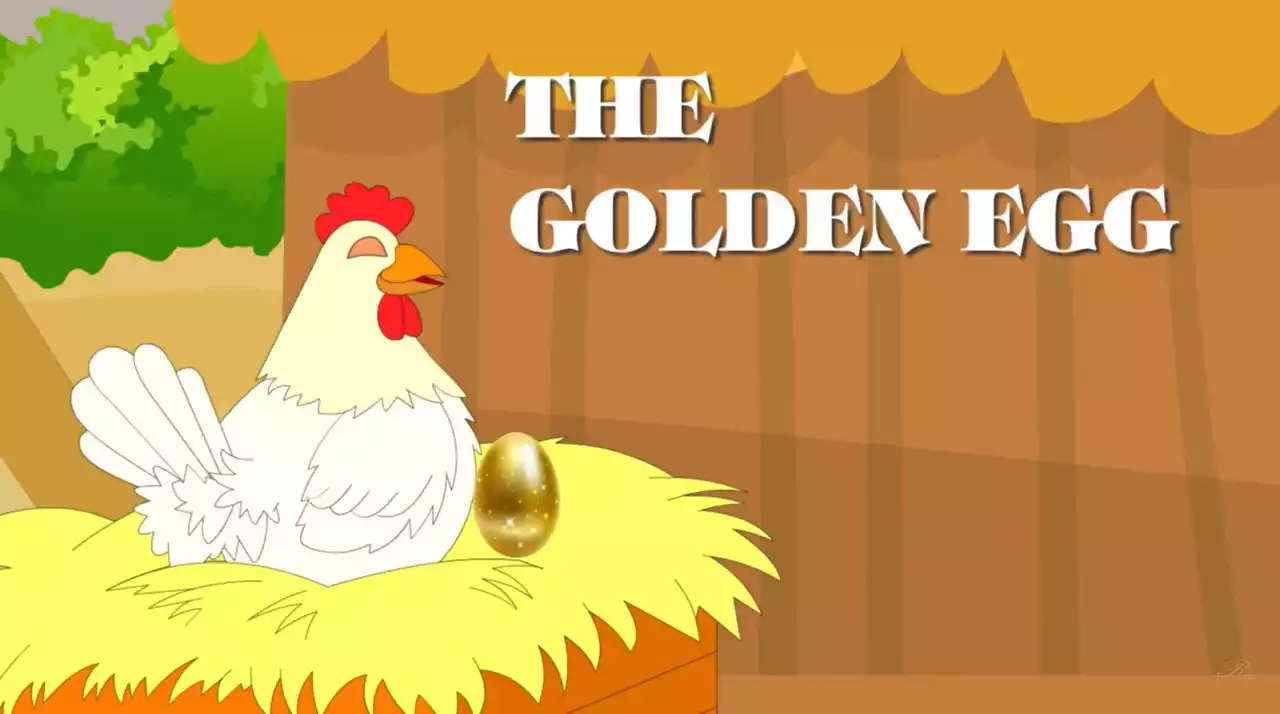Yggdrasil: The Tree of Life in Norse Mythology
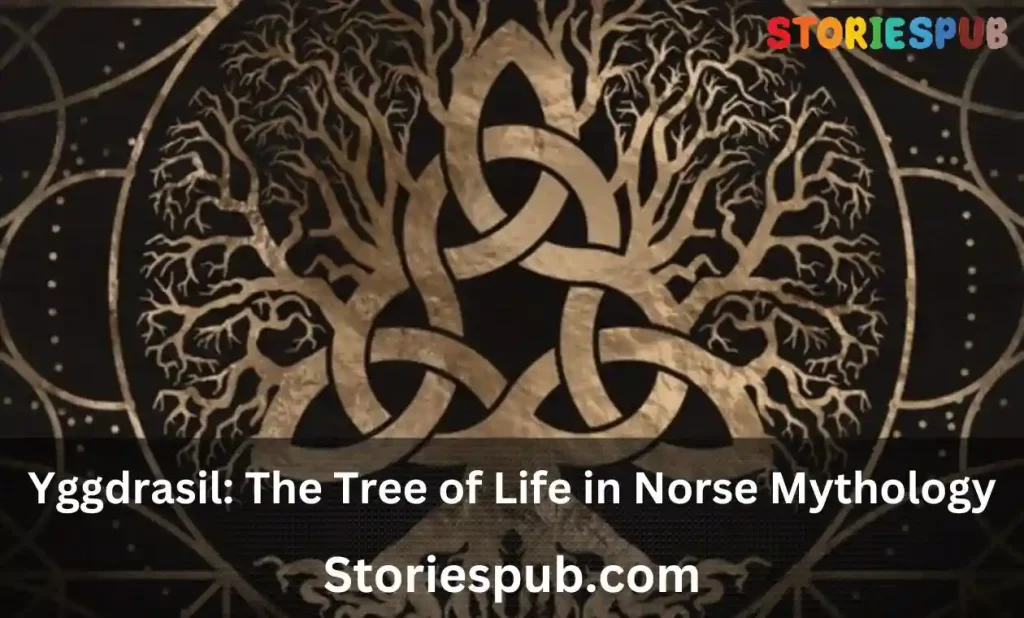
The Importance of Yggdrasil in Norse Mythology
In Norse mythology, Yggdrasil is the world tree that connects the nine worlds. It is considered the center of the cosmos and plays a significant role in Norse mythology as it not only connects all the worlds but also sustains them.
The tree is known by many names, including The World Tree, The Tree of Life, and The Ash Tree. Yggdrasil is central to Norse mythology because it symbolizes the interconnectedness of everything in existence.
It reflects how everything in life is interdependent and how actions taken in one world can have consequences for other worlds. It also represents growth, stability, and endurance – since it has stood for generations without showing any signs of weakness.
According to legend, Yggdrasil was created by Odin and his two brothers Vili and Ve when they killed Ymir (the giant), who was considered the first being in Norse mythology. They used different parts of Ymir’s body to create different parts of the universe – using his bones to create mountains, his blood as oceans, his hair as trees, etc.
The purpose behind creating Yggdrasil was to establish an axis mundi – a spiritual connection between heaven and earth – connecting all nine worlds. This connection allowed gods to communicate with humans; for example, it enabled them to travel from one world to another through Bifrost (the rainbow bridge).
Brief Overview of Norse Mythology
Norse mythology refers to a collection of stories from ancient Scandinavia that tell stories about gods and heroes’ lives. Many people think that Norse mythology only involves Thor or Odin; however, there are many other characters involved. There are nine realms connected by Yggdrasil: Asgard (home of gods), Alfheim (home of elves), Svartalfheim (home of dwarves), Midgard (home of humans), Jotunheim (home of giants), Nidavellir (the dark world beneath the earth), Helheim (the realm of the dead), Vanaheim (home of Vanir gods) and Muspelheim (a land of fire and heat).
Many Norse myths help to explain natural phenomena, such as thunder, lightning, and earthquakes. These myths provide insight into how the ancient Scandinavians viewed the world around them and their place within it.
Purpose of the Article
The purpose behind this article is to provide an in-depth analysis of Yggdrasil’s role in Norse mythology. The article will explore its origins, structure, symbolism, significance, and how it connects all nine worlds. The article aims to bring to light what Yggdrasil represents in Norse mythology beyond being a simple tree; it is an essential symbol representing interconnectedness between everything.
It will also delve into why understanding Norse mythology is crucial for appreciating modern literature that draws inspiration from Norse mythology. This article will be useful for fans of fantasy literature interested in learning more about Nordic mythology or anyone who wants to gain a deeper understanding of Yggdrasil’s role in Norse mythology.
The Origins of Yggdrasil
Creation Myth in Norse Mythology
According to Norse mythology, the world was created and ordered by a trio of gods known as Odin, Vili, and Ve. These three brothers came together to create the world from the remains of the giant Ymir. From his body, they created the earth, sky, and seas.
They also used his bones and teeth to build mountains and cliffs. One important element that arose from this creation process was a great ash tree that would come to be known as Yggdrasil.
This was no ordinary tree – it served as a conduit between the nine worlds of Norse mythology. It provided stability for both magic and nature in all realms.
The Role of Odin, Vili, and Ve in Creating Yggdrasil
Odin played an important role in creating Yggdrasil because he had a deep understanding of magic. He knew that he needed something to bind all nine worlds together in order for them to function harmoniously. In order to accomplish this task, he enlisted the help of his brothers Vili and Ve.
Together they created an ash tree with roots that extended deep into each realm. They built upon this foundation until it reached so high into the sky it touched upon Asgard itself – home to their divine kindred.
Symbolism behind the Creation of Yggdrasil
The creation process behind Yggdrasil is steeped in symbolism. It serves as a representation for concepts such as life cycles and cycles within time itself.
The ash tree represents a cycle or passage through time which is integral to many northern cultures’ beliefs about death-rebirth or life-death-life phases; such as those common amongst Germanic tribes. Additionally, one can find imagery within Scandinavian mythology regarding The World Tree representing both masculine (war, violence) and feminine (peace, birth) principles.
The tree may also represent the balance between order and chaos that exists in the universe. The roots of Yggdrasil are said to extend into three realms or wells – one in Asgard with the gods, one in Niflheim with giants and Hel, and one in Jotunheim with other giants.
These wells represent knowledge from these realms that is distilled into the waters that feed Yggdrasil’s trunk. In Norse mythology, it is believed that the fate of all beings is tied to Yggdrasil – even Odin himself will meet his end when it falls.
The symbolism behind this belief speaks to how everything within the nine worlds is connected through an intricate web of fate which links everyone’s lives together. When Yggdrasil falls, so too does everything else.
The Structure and Symbolism of Yggdrasil
Physical Description of the World Tree
Yggdrasil is an immense ash tree that is said to be at the center of the Norse cosmos, connecting all nine worlds. It is described as having branches that extend outwards to provide a roof over the world, and its roots stretch deep into three different realms. The trunk of the tree is so vast that it cannot be circled by any creature or entity.
The tree was considered a sacred symbol in Norse mythology and was revered as an axis mundi, which means it acted as a center point from which all things flowed. It represented both life and death, with its branches reaching towards heaven and its roots extending deep into the underworld.
The Three Roots and Their Significance
Yggdrasil has three roots that extend deep into different realms. The first root extends down to Niflheim, which is a realm of eternal ice and darkness.
The second root reaches Jotunheim, home to the giants who were thought to be both enemies and allies of the gods. The third root stretches towards Asgard, which is home to the gods.
Each root represents different aspects of existence: past, present, and future. The Niflheim root represented death and endings; Jotunheim’s root represented change; Asgard’s root represented growth and new beginnings.
Niflheim Root
Niflheim’s root was located in the land of misty darkness where Hel ruled over those who had died from illness or old age. This wellspring also contained Hvergelmir (cauldron-of-boiling-matter), from which rivers flowed throughout Niflheim turning poisonous when they met frost-thurs (frost-giants).
This wellspring housed two serpents – Nidhogg and the dragon that gnaws at one of the roots of Yggdrasil. It was believed that Nidhogg would spend his time chewing and gnawing at the root, attempting to destroy the tree.
Jotunheim Root
The Jotunheim root was located in a place where giants roamed. This wellspring was guarded by Mimir, who drank from it to gain wisdom and knowledge.
Odin willingly gave one of his eyes to Mimir for a drink from this well. It is also home to Ratatoskr, a squirrel who runs up and down Yggdrasil’s trunk relaying messages between Nidhogg and an unnamed eagle perched on top of the tree’s branches.
Asgard Root
The Asgard root represented growth and new beginnings. It flowed with an elixir known as mead or soma, which granted eternal youth and immortality. Its guardian was Urd, who protected it with her sisters Verdandi (becoming) and Skuld (necessity) – also known as the Norns.
The Three Wells and Their Significance
In addition to its roots, Yggdrasil had three wells located around its base: The Well of Urd, Well of Mimir, Hvergelmir.
Well of Urd
The Well of Urd was located beneath one root in Asgard. It was guarded by three fates or norns who were responsible for weaving together all life experiences past present future into unbreakable destinies; they are Urth (that which has become), Skuld (that which should be), Verdandi (that which is happening). This well contained memories from all time periods – what had happened in previous ages -and any god or goddess could come here to seek wisdom and knowledge.
Well of Mimir
The second well was located beneath Jotunheim’s root, guarded by the one-eyed giant Mimir. This well contained the water of life and granted wisdom to any who drank from it.
Odin had given his eye to Mimir in order to gain a drink from it, thereby receiving its knowledge. This wellspring also played a role in Ragnarok – the end of the world – as Odin threw Gungnir into its waters before he went into battle against Fenrir.
Hvergelmir
Hvergelmir was located under Niflheim’s root and was considered the source of all rivers in the cosmos. It was home to two serpents, Nidhogg and another unnamed serpent that gnawed on Yggdrasil’s roots.
Yggdrasil, with its three roots that extend deep into different realms and three wells around its base, plays an essential role in Norse mythology. Its physical description symbolized both life and death while its roots represented different aspects of existence: past, present, and future.
The wells contained important sources of wisdom while their guardianship could reveal what had happened or what is currently happening anywhere. Overall Yggdrasil reinforces how significant trees were in Norse mythology with ideas such as balance between all things or access to knowledge for those brave enough to seek it out.
The Nine Worlds Connected by Yggdrasil
Midgard- The World Inhabited by Humans
Midgard is the world that humans inhabit. It is represented as the middle ground between all nine worlds connected by Yggdrasil.
Midgard is surrounded by sea and protected by a serpent named Jormungandr, who is said to be so large that he encircles the entire world. According to Norse mythology, Midgard was created from the eyebrows of the giant Ymir after he was killed.
The word “Midgard” means “middle enclosure,” as it is seen as a safe haven for humans. It is also believed to be connected to Asgard through Bifrost, the rainbow bridge that connects all worlds of Norse mythology.
Asgard – Home to The Gods
Asgard is home to many gods in Norse mythology. This realm is considered one of the most important worlds in Norse cosmology because it has a significant relationship with other nine worlds, including Midgard and Jotunheim. In Asgard, there are twelve main gods known as Aesir, who are led by Odin.
Some other significant gods include Thor, Frigg, Balder, and Loki. Asgard represents strength and power in Norse mythology and is protected from evil forces by Heimdallr.
Vanaheim – Home to The Vanir Gods
Vanaheim was discovered earlier than Asgard but has since been merged with Asgard. Vanaheim was home to Vanir gods who were associated with fertility and prosperity. Unlike Aesir who were warlike in nature, Vanir were peaceful deities who did not engage in battles often.
The most notable god associated with Vanaheim was Njordur who had power over waters; he could calm any stormy seas or raging rivers with a flick of his hand. Other gods in Vanaheim include Freya, Gullveig, and Kvasir.
Jotunheim – Home to Giants
Jotunheim is home to giants (Jötnar) who are considered to be the arch-enemies of gods in Norse mythology. The world is described as a harsh and inhospitable place where the giants thrive.
Jotunheim is also seen as chaotic and unpredictable. Some notable characters from Jotunheim include Thrym, who stole Thor’s hammer, and Skrymir, who assisted Thor on his journey to Utgard-Loki.
Svartalfheim – Home of Dark Elves
Svartalfheim was the home of dark elves known as Dökkálfar in Norse mythology. They were distinct from their light elf counterparts who lived in Alfheim.
The dark elves were typically associated with death or darkness but were also skilled craftsmen who produced weapons or other goods for the gods. One famous character associated with Svartalfheim was Eitri (or Sindri), a dwarf-blacksmith who created some remarkable items such as Odin’s spear Gungnir and Thor’s hammer Mjolnir.
Conclusion
The Nine Worlds connected by Yggdrasil play an important role in Norse mythology by providing insight into a complex cosmology that represents different areas of human experiences such as love, war, death, prosperity, among others. These worlds are portrayed vividly through the rich storytelling that has been passed down through generations. The stories surrounding these worlds continue to fascinate people worldwide because of their timeless themes that still resonate today.
Whether it’s the stories about gods and goddesses or heroes’ journeys to defeat evil forces; these stories have become an integral part of popular culture that continues to inspire TV shows, movies, and literature. Overall, the Nine Worlds connected by Yggdrasil are a testament to the incredible imagination of Norse mythology and its enduring legacy that continues to capture our hearts and minds.
Hey kids, how much did you like The Yggdrasil: The Tree of Life in Norse Mythology ? Please share your view in the comment box. Also, please share this story with your friends on social media so they can also enjoy it, and for more such Norse Mythology, , please bookmark storiespub.com.
Related Post :
Yggdrasil FAQ
What does Yggdrasil look like?
Yggdrasil is often depicted as a giant ash tree with roots that stretch into three different realms of the Norse cosmos.
What is the significance of Yggdrasil in Norse mythology?
Yggdrasil represents the idea of the world tree, a common motif in many mythologies, and serves as a symbol of the interconnectedness of all things in the natural world.
What are the three roots of Yggdrasil?
The roots of Yggdrasil stretch into three different realms of the Norse cosmos: Asgard, Midgard, and Helheim.
Are there any stories involving Yggdrasil?
Yggdrasil appears in several Norse myths, including one in which the god Odin hangs himself from the tree in order to gain knowledge.
Is Yggdrasil worshipped in modern times?
Yggdrasil is not worshipped as part of any organized religion in modern times, but it is still studied and appreciated by scholars and enthusiasts of Norse mythology.
Are there any symbols associated with Yggdrasil?
Yggdrasil is often associated with the image of the tree, as well as with the concept of divine balance and order.
Is Yggdrasil similar to other mythical trees in other cultures?
The concept of a mythical tree that represents the interconnectedness of all things is found in many cultures throughout the world, and there are some similarities between Yggdrasil and other mythological trees, such as the Greek tree of life known as the Dryad.
Are there any modern adaptations of Yggdrasil in popular culture?
Yggdrasil has been adapted in various forms in popular culture, including in video games, comic books, and movies. It is often portrayed as a powerful and magical tree with a significant role in the mythos of Norse mythology.
What is Yggdrasil's relationship with the other realms in Norse mythology?
Yggdrasil is said to connect the different realms of the Norse cosmos, and is often considered to be the most important element of Norse cosmology, as it represents the interconnectedness of all things.






